I’m always excited at the prospect of travelling and exploring new places but when to that excitement you also add the feel-good factor of knowing that your trip has a purpose and that your being there contributes to the better good, the intensity of that excitement spikes to a level that is hard to describe.
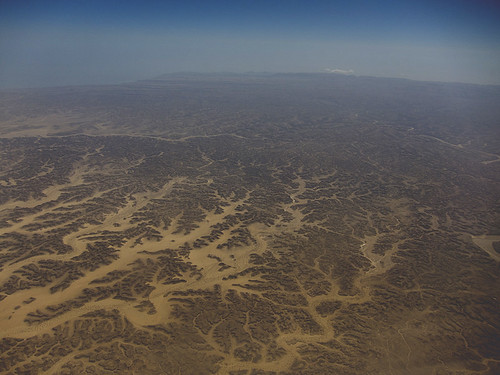 |
| View on landing |
The region of Dhofar is known for the Khareef season, the seasonal dampening effect brought by the Asian monsoons whose arms reach the southern coast of Oman for a few months during the summer transforming an otherwise arid landscape into a verdant and vibrant land and attracting flocks of tourists from the surrounding countries looking for a break from the unforgiving summer heat.
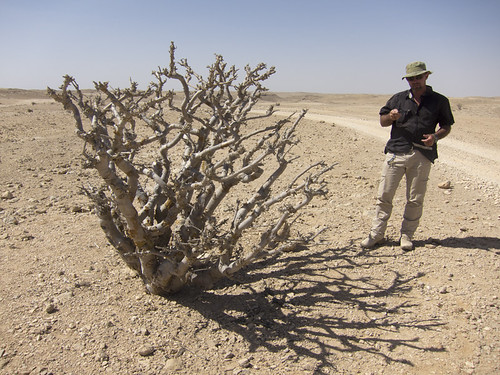 |
| Frankincense Tree |
The flanks of the hills surrounding Salalah are covered in thorny bushes and trees, they are dry now but it is not hard to imagine the transformation during Khareef (I reinforce my resolution to come back in summer). Here herds of camels and cows regularly claim supremacy of the roads, eagles dot the sky and birds weave their intricate nests up the coconut palm fronds that rise up high in plantations right in the middle of town.
As the drive to base camp takes me through town and then up and down rocky hills and grazing land, I surrender to the feeling of wonder that this country keeps magically stirring inside me even after two and half years. So many different landscapes moulded by wind, sun, water and man.
This visit however, is not about watching the landscape, visiting historic sites, lazing on the white long beach or exploring the depth of the sea (for as much as I would like to). On this occasion I am joining a group of volunteers lead by an experienced field scientist, an expedition leader, an official from the Oman Royal Diwan and the rest of the crew on a quest to track down the almost extinct and critically endangered Arabian Leopard (Panthera pardus nimr).
As some of you may remember, last October I joined Biosphere Expeditions on the Musandam marine expedition after winning a scholarship. I have kept in touch with the organization since, so when they needed a person to help drive one of the expedition vehicles back to Muscat I volunteered. Later on, as I pondered whether to fly earlier to explore a bit of the country that I hadn’t visited yet, I was offered the opportunity to actually join the last week of the expedition to get a taster. I never let these kind of opportunities pass me by so a month later I was setting my tent up in Wadi Ayun (the expedition base) to spend a week looking for tracks, scat (or poo as we know it), checking camera traps and interviewing the locals; providing my contribution to an important ongoing research project that started back in 2006.
Unfortunately we didn’t actually see the “cat in pyjamas”, not even a fresh picture from the camera trap but that wasn’t a reason for disappointment. Volunteers come on the trip aware that they may never see an actual Leopard. It is indeed a rare animal and the expedition is not a safari holiday in a reserve where animals are used to humans.
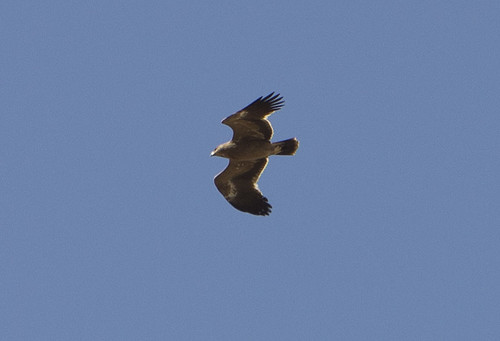 |
| Eagle |
Establishing Leopard presence in this specific area would represent an important step in the advancement of knowledge of the Leopard’s whereabouts and would provide scientific information so essential for decision making on conservation management by the local government.
Proof that the Leopard crosses this corridor could imply the possibility of cross breeding between the individuals in the two confirmed areas, a factor that could be vital to the survival of the last remaining wild cats in this region.
Having a photo, although amazing, is not essential to this quest: an analysed piece of scat which is carefully marked to a precise GPS location by the volunteers who find it, can be enough to confirm the cat’s passage; while the study of the territory, human impact levels and the presence of sufficient indicator species the Leopard feeds on could be enough to confirm whether this territory constitutes indeed a suitable habitat for the animal.
I never though that one could get that excited about finding a bit of poo!
After I was given a tour of the camp, briefed on the camp’s rules and ramped up on the science and daily routines I was able to go on my first excursion.
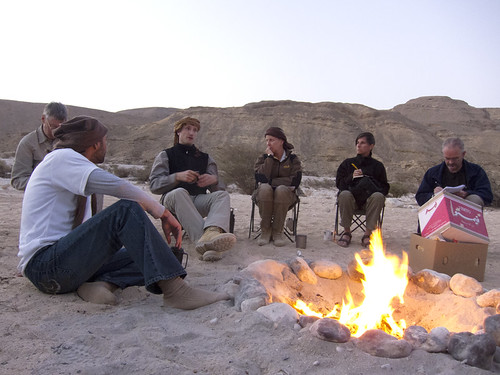 |
| Briefing by the camp fire |
At the end of the day we would gather around the fire before dinner and report on our findings.
Collecting camera traps was my favourite activity: you never knew what you were going to find on the pictures and the remote chance that there could be a Leopard was a very exciting prospective indeed.
Even in this case unfortunately the Leopard kept truthful to its elusive nature however it was rather exciting to see photos of a Caracal, wolf, hyena, genet and other local fauna. Before coming on this expedition I didn’t even know that this variety of animals was present there.
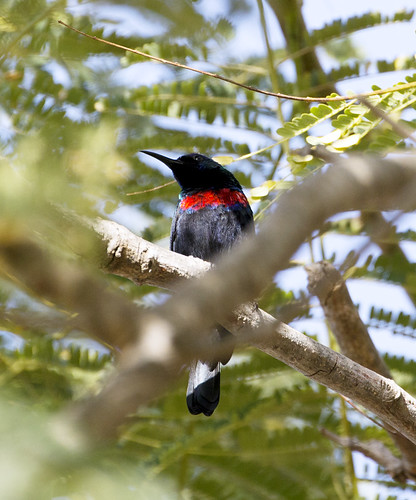 |
| Shining Sunbird |
At the end of the expedition, the scientist analyses the data collected, ensures that collected specimens go through specialised DNA testing and produces a scientific report for the stakeholders.
For a volunteer coming to an expedition like this there is a lot to learn and experience. On top of the science stuff, recognising tracks and recording data, some people enjoy driving off-road up and down dry river beds for the first time, everybody gets to use GPS and other specialised equipment and in a number of occasions we spotted animals in the wild like Hyrax, Gazelle, Eagles and many other species of birds and critters.
These kinds of expeditions take enthusiastic volunteers with no scientific background or prior knowledge to experience scientific field research. The funding and time provided by the volunteers contribute directly to a project that otherwise might have not been possible.
This kind of field research can be resource intensive. Finding the money and people is not easy so companies like Biosphere Expeditions bring science and the public together and both groups benefit from such effort while contributing to an increase in awareness. It is hard to find a volunteer who does not return enthusiastic from this kind of experience. Individuals feel truly engaged and compelled to talk about it.
In the past taking part in these experiences required a lot of time, a lot of funding and a bit of an Indiana-Jones’ personality but nowadays there are options for everybody.
While as a personal preference for this kind of experience I tend to lean towards somewhere off the beaten track and prefer something a little bit more adventurous than my standard holiday, you don’t necessarily have to rough it. Expeditions like Biosphere’s Western Australia Flatback turtle research project for example promises a very comfortable and idyllic expedition base.
So next time you are looking for an idea for a holiday, think about using a week or two to volunteer on a worthwhile project. I can assure you that what you will come back with will be much more than some pretty postcard photos and a healthy glow.
And now if you haven’t had enough of reading, you may also have a look at the article and watch the video published by a Gulf News reporter who came to spend a few days at base camp while I was there:
